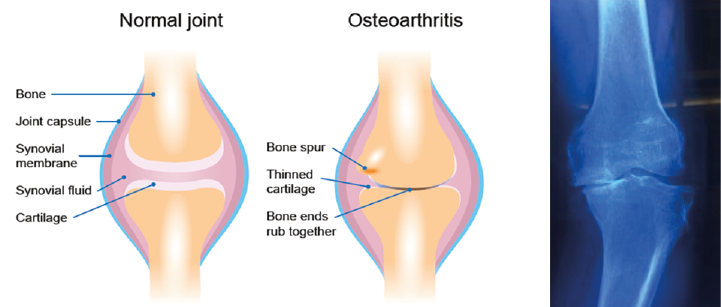"OLD" KNEES? THERE MAY BE A RAY OF HOPE...
The Most Effective Treatment for Osteoarthritis of the Knees
Introduction
One of the most effective current treatments for osteoarthritis of the knees is a combination of non-pharmacological interventions and pharmacological therapies. Non-pharmacological interventions often include exercise programs, physical therapy, and weight management, which help improve joint function, reduce pain, and enhance overall quality of life. These interventions aim to strengthen the muscles around the knee joint, improve joint stability, and promote flexibility and range of motion. Additionally, the use of assistive devices such as braces or orthotics can provide support and alleviate pressure on the affected joints.
Pharmacological therapies for osteoarthritis of the knees typically involve the use of pain relievers, nonsteroidal anti-inflammatory drugs (NSAIDs), and corticosteroid injections. These medications help manage pain and reduce inflammation in the affected joint. In some cases, viscosupplementation injections may also be utilized, where a gel-like substance is injected into the joint to provide lubrication and cushioning.
These treatments are widely available in various healthcare settings, including hospitals, specialized orthopedic clinics, and rehabilitation centers. They are typically administered and supervised by healthcare professionals such as orthopedic specialists, rheumatologists, and physical therapists. The above have been used in combination for many years, but sufferers will know that the condition gradually diminishes one's mobility and quality of life. Fortunately, advances in medical science have led to the development of effective treatments. In this blog, we will explore the most cutting-edge treatment for knee osteoarthritis and the availability of this treatment.
The Rise of Regenerative Medicine
Regenerative medicine has emerged as a promising approach for treating osteoarthritis of the knees. One of the most effective treatments in this field is platelet-rich plasma (PRP) therapy. PRP therapy involves extracting a patient's blood, processing it to concentrate platelets, and injecting the resulting platelet-rich plasma into the affected knee joint. Platelets contain growth factors and cytokines that stimulate tissue regeneration, reducing pain and inflammation while promoting healing.
PRP Therapy: Unleashing the Healing Power
PRP therapy has gained recognition due to its remarkable efficacy in alleviating the symptoms of knee osteoarthritis. The concentrated platelets injected into the knee joint initiate a cascade of regenerative processes, promoting the repair of damaged cartilage and reducing pain. PRP therapy is a minimally invasive procedure that can be performed in a doctor's office. It offers several advantages, including minimal side effects and a faster recovery time compared to traditional surgical interventions.
Availability and Access
PRP therapy is becoming increasingly accessible in many regions around the world. The treatment is available in specialized clinics and medical centers that offer regenerative medicine services. Major cities often have multiple clinics providing PRP therapy, giving patients a wider range of options. It is crucial for individuals seeking PRP therapy to consult with a qualified orthopedic specialist or sports medicine physician who has experience in regenerative medicine.
Conclusion
Living with knee osteoarthritis no longer means being limited by pain and diminished mobility. PRP therapy has emerged as one of the most effective treatments for this condition, offering patients hope for regaining their quality of life. With its growing availability, individuals can explore this innovative therapy to find relief from knee osteoarthritis and embark on a journey toward healthier, pain-free knees.



